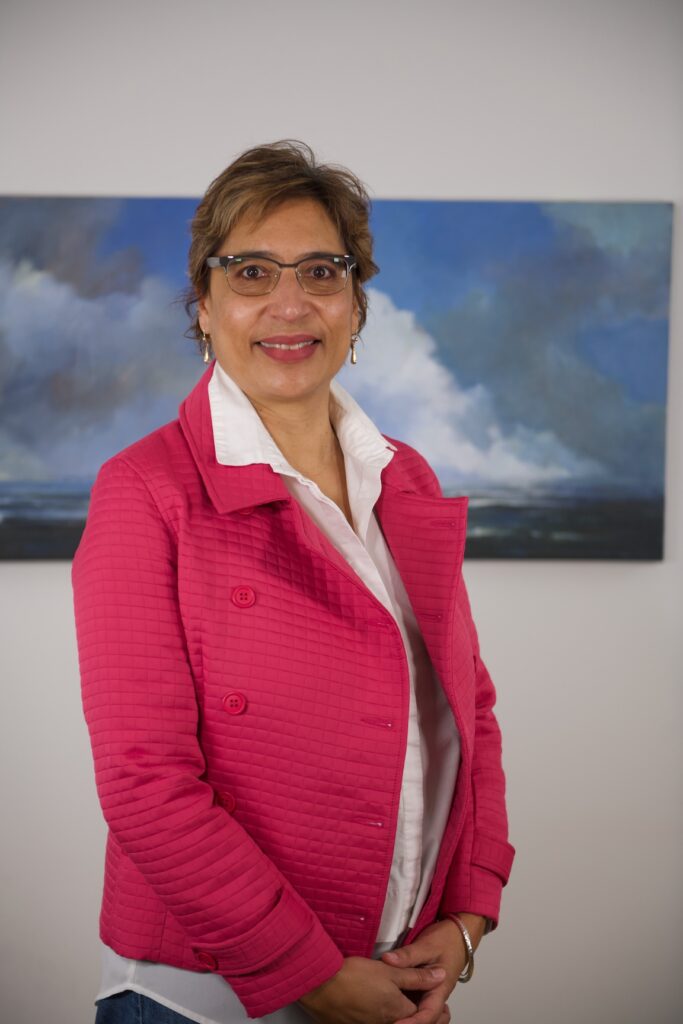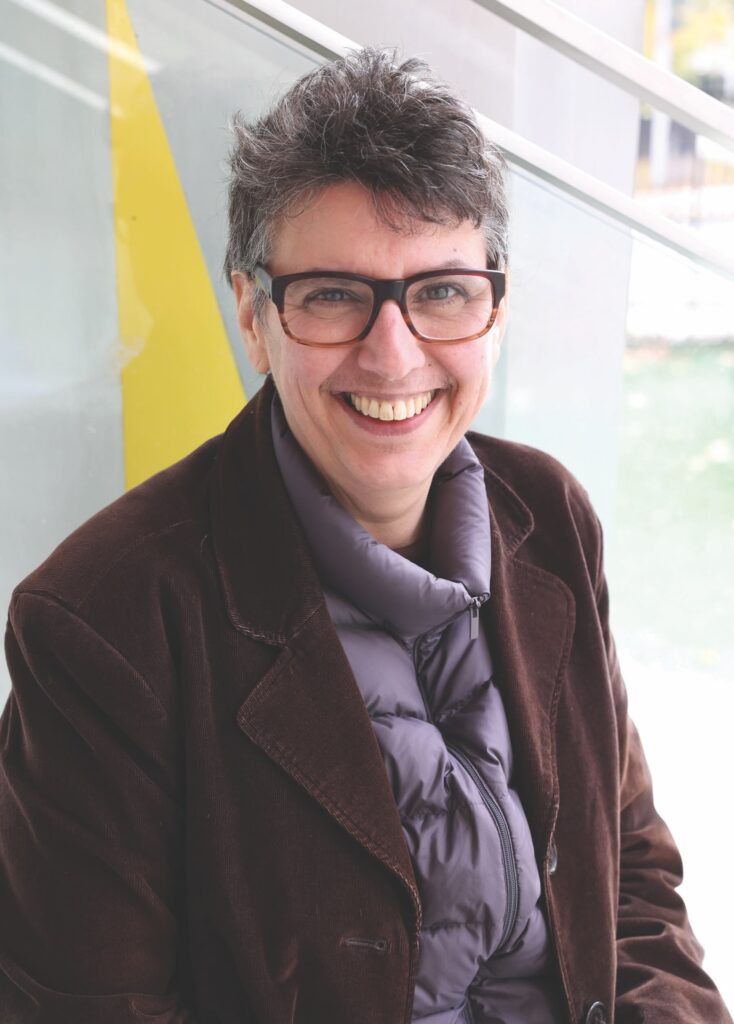DVSA: Finding new life at 60
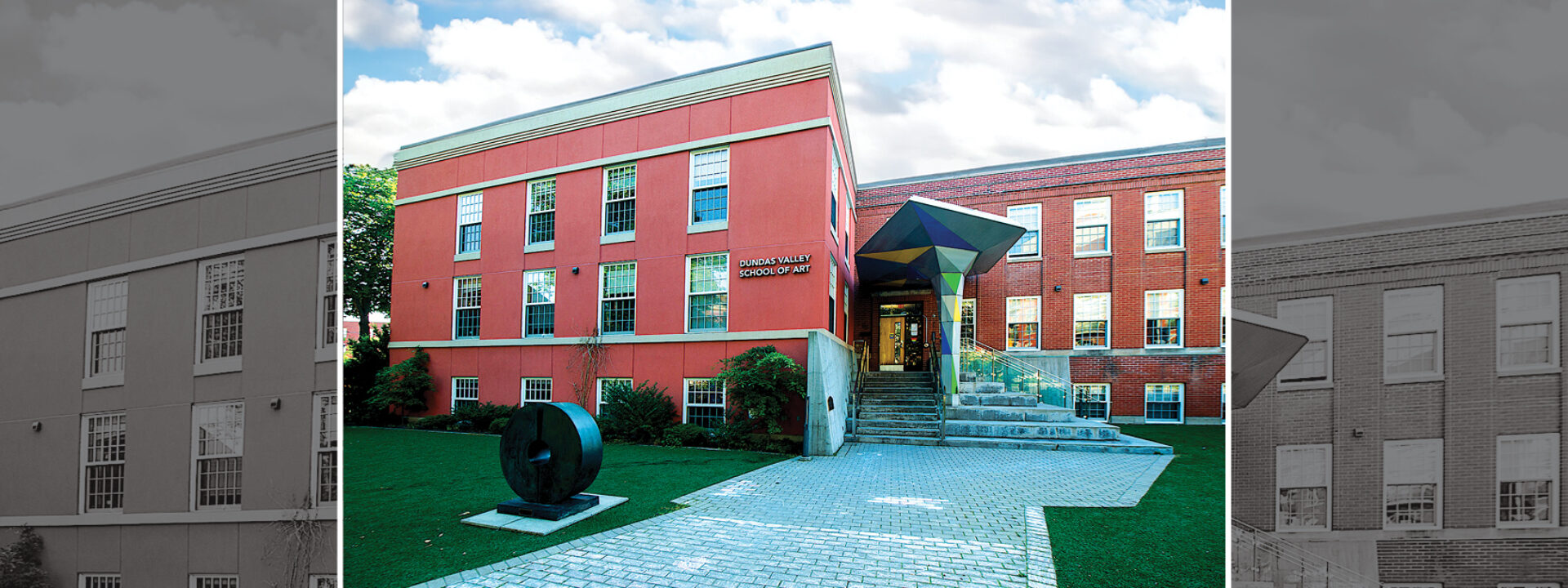
Dundas Valley School of Art has innovative new leadership, renewed vision, peak student enrollment and ambitious new programs as the cherished art school – with a fascinating history – celebrates a milestone anniversary.
Even with all the best intentions and meticulous plans, arts organizations can rise and fall with stomach-churning frequency. The present moment is especially precarious for our neighbours in Toronto where Artscape remains embroiled in receivership and beloved festivals from Fringe to Hot Docs are facing life-threatening funding cuts. In this hostile climate, there is much to celebrate and cherish in Dundas Valley School of Art, which began its life as scarcely an idea in 1964 and is now entering its 60th year stronger than ever.
This landmark anniversary is an opportunity to celebrate, reflect, give thanks and look forward to the next 60 years. Two major free events are planned in tribute to the community that has sustained the school throughout its history, beginning with a carnival-themed adult event in earlier June where guests were encouraged to dress in the style of the school’s founding years in the 1960s. A family-focused open house on Sunday, Oct. 27, modelled after DVSA’s popular Family Art Days, will be another occasion to dress up for a Halloween-themed afternoon of art activities for kids of all ages.
DVSA owes its longevity to an impressive legacy of leaders, volunteers, and artists who have engaged in the school as teachers, learners, and contributors to the annual art auction. I met with executive director Kathron Hann and visual arts director Sally McKay in the weeks ahead of this year’s auction, at a time when the transformation of studios into display spaces ran parallel to busy March Break camps. Colourful kids’ artworks were scattered like confetti in spaces where temporary walls were beginning to fill corridors and obscure high windows in anticipation of the hundreds of artworks yet to come.
All this overlapping activity should come as no surprise in an art school that has hit a new peak in student enrollment. DVSA had nearly 8,000 registrations in its most recent year – 7,968 to be exact, which Hann swiftly quotes with her keen mind for numbers. This number sets a new high-water mark for the school and nearly doubles the 4,000 enrollment DVSA boasted at its 40th anniversary just 20 years ago.
Hann came to DVSA in 2017 via a career in independent schools to serve as director of business operations under her predecessor Claire Loughheed. As an educational leader whose strength lies in business rather than the arts, Hann, who was appointed executive director in 2023, was determined to hire a visual arts expert capable of driving a renewed and relevant vision for the school. She found this leader in McKay, a widely respected artist, writer and independent curator who taught at McMaster University’s School of the Arts for the last 10 years.
Familiar to many across Canada as the co-founder of Lola, a Toronto-based art magazine that made waves nationally for its forthright approach to arts criticism at the turn of the millennium, McKay has long been a champion for grassroots communities and their access to art’s many opportunities. “Art is so essential in people’s lives,” she says. “Art comes early in the basic list of needs – we’ve seen that throughout history.”
McKay’s task is to build on the momentum established by the artists who have found a home at DVSA while creating space for diverse communities. Many of DVSA’s outreach programs are responsive to those within walking distance of the school, such as the Ellen Osler Home across the street where DVSA provides art programs for people living in transitional housing. Art material kits sent to organizations further afield like the Afghan Association of Hamilton to support newcomer workshops provide quick and practical support that can cultivate more sustained partnerships beyond DVSA’s walls.
McKay has also invited new voices into the school with programs such as Lavender Inspirations, a free series of mixed media classes for 2SLGBTQIA+ youth. In less than a year, McKay has made remarkable strides in expanding outreach programs to new groups with a speed that she credits to DVSA’s nimble team, guided by Hann’s leadership.
“Kathron has amazing vision,” McKay says. “She is absorbed and listening.”
This model of leadership shared by two remarkable women is its own circular tribute to the early days of DVSA, which was founded in 1964 by Marion Farnan and Emily Dutton. As middle-aged housewives reclaiming their art practices after raising their children, the pair shared lodgings at the Red Lion Inn while taking classes at the Doon School of Art, an independent art school that once occupied the Homer Watson House and Gallery in present-day Kitchener. Over breakfast one day, they impulsively asked John Martin, an Ontario College of Art professor recently relocated to Ayr, to teach one day a week closer to home in Dundas. Much to their surprise, Martin agreed, and they were soon scrambling to set up a makeshift studio above Jack Pinder’s Sporting Goods Store at 99 King St. W.
Faced with the prospect of paying rent by the month rather than the day, they arranged a second class with renowned sculptor Elizabeth Holbrook, who enlisted her friend Lincoln Alexander as a model for three portrait sessions. These first classes were promoted via a letter dated Sept. 4, 1964 beneath a bravely typewritten letterhead for Dundas Valley School of Art – an institution that was scarcely an idea at the time. As Farnan wrote in her 2004 memoir, DVSA: The First Forty Years, “the idea of running an art school had not entered our heads but it was as if we had stepped onto a roller coaster. We didn’t know the ride was going to gather speed or dream that so many people would want to come along.”
Hamilton artists flocked to these first classes and swiftly overwhelmed that upstairs studio. A move to the former Smith glove factory at 132 Melville St. the following year allowed for a rapidly expanding selection of classes, including figure and life drawing. Despite frugal beginnings marked by DIY repair jobs and plenty of sweat equity, Dutton and Farnan insisted on a high calibre of contemporary art training led by working artists who pushed beyond the conventions of their day. Life drawing classes for mixed-sex classes were offered at a time when Ontario women had few opportunities to work with nude models and universities relied on mannequins for their lessons. Hiring models was a challenge at first, but introductions via Bill Powell provided DVSA with Hamilton-based life models who hitched rides to and from Dundas with Dutton and Farnan.
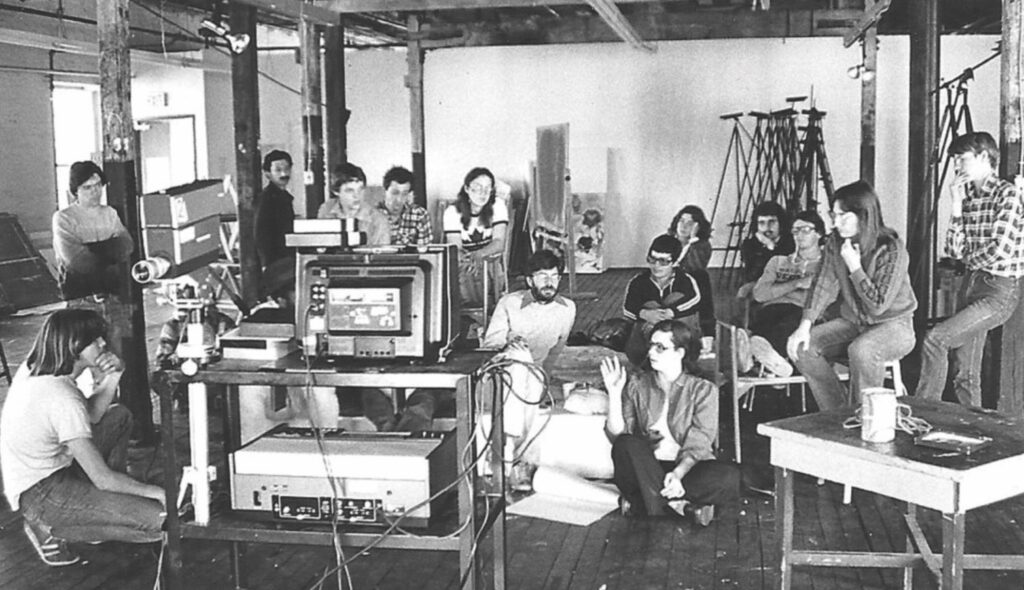
The rapid growth of DVSA had a transformative impact on Dundas following a period of post-industrial decline. A community of students and their teachers grew larger year over year, becoming regulars at what was then the Collins Hotel and setting the stage for the close-knit artistic enclave that thrives in Dundas today. DVSA’s impact was equally felt in the larger art education landscape; under the early guidance of then-instructor Mario Polidori, DVSA offered extension courses at art institutions from St. Catharines and Grimsby to Kitchener-Waterloo and Stratford in the late 1960s. These travelling artists planted the seeds for independent, locally sustained art classes in these communities, fostering growth in many regional art scenes.
DVSA has called 21 Ogilvie St. home since 1971. Having served variously as a Wesleyan Ladies’ College, a steel manufacturer, and a World War II munitions factory, this three-story building was found in a terrible state of neglect. What Farnan and Dutton recognized here was 27,000 square feet of potential where new offerings in ceramics, printmaking and photography would spread throughout the former factory, while the foundations of painting and drawing endured in an airy loft that has been a highlight of many students’ experiences of this place.
I count myself among those who fondly remember that loft studio where I took my first life drawing class as a high school student chasing a future as an artist. Climbing creaking stairs to a seemingly vast factory floor darkened by winter night, I was immediately enchanted by the spot-lit arena of easels, and more than a little intimidated by the fully-fledged artists into whose company I had been blindly accepted. John Miecznikowski was my first instructor in this space, a reassuring presence whose history with DVSA goes back to its founding decade and a big proponent of playing jazz music during lessons to lend movement to our gestural drawings.
These first lessons built my portfolio and an arsenal of skills in art-making that I sustained between terms at McMaster. Further life drawing with V. Jane Gordon reinforced a knowledge of human anatomy and a practice of patient observation before laying down a first mark. From Katherine MacDonald, who began her own training as a young student at DVSA, I learned to see colour as an ever-changing element of light and darkness – a lively, slippery thing that demanded a careful, ever-watchful eye. While my art today has little in common with the figurative work I created at DVSA, the tactics I learned in this space have remained with me ever since.
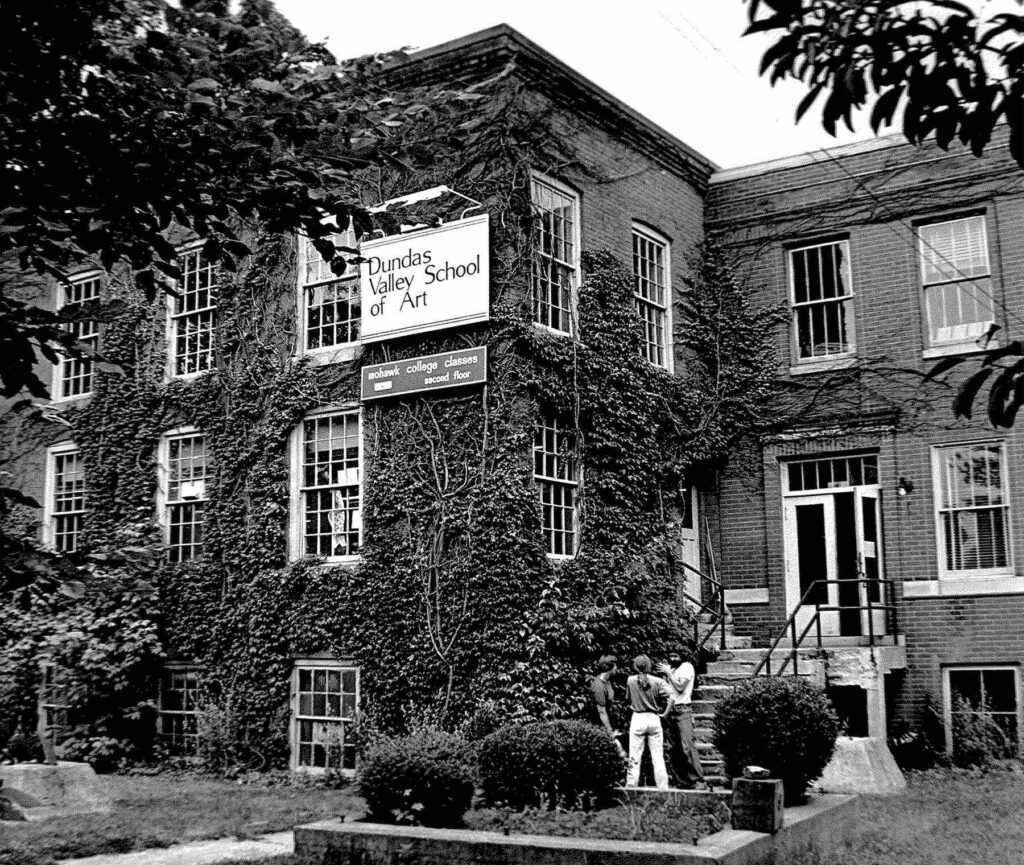
These part-time classes for which DVSA is most widely known continue to support artists at their inception, while new offerings introduced by McKay create points of entry for artists who may not have seen a place for themselves in the traditional curriculum. Tess Martens’ Performance Art for Beginners is a gentle invitation to consider the body as a vessel for creative expression, while Talk About Your Art provides a monthly venue for group critique sessions guided by retired McMaster painting professor Judy Major-Girardin. More seminar-based learning and classes like a three-part workshop in photography presentation strategies support working artists with the tools needed to sustain a life-long career.
Another innovation McKay has organized in her busy first year is a workshop for both new and experienced life models. While countless models have moved through DVSA’s studios over its sixty years, few if any programs have ever been offered for their professional training. “It’s a practice that is very artful,” McKay notes, “and it’s a skill that brings so much to the art that gets made. It’s important to recognize and acknowledge that.”
Another significant shift that has been more than six years in the making is the launch of DVSA’s first accredited diploma program. Positioned as an intensive and intimate alternative to the overwhelming scale and anonymity of large-scale post-secondary institutions, the three-year, full-time diploma in Studio Fine Art Practice & Theory will train a small cohort of up to 10 students per year. An individualized program of study follows a first year of foundational classes that emphasize experimentation with a wide range of materials to challenge existing practices and generate new ideas. The current first-year students have enjoyed field trips and a residency at the Royal Botanical Gardens that will serve as field work for a year-end exhibition.
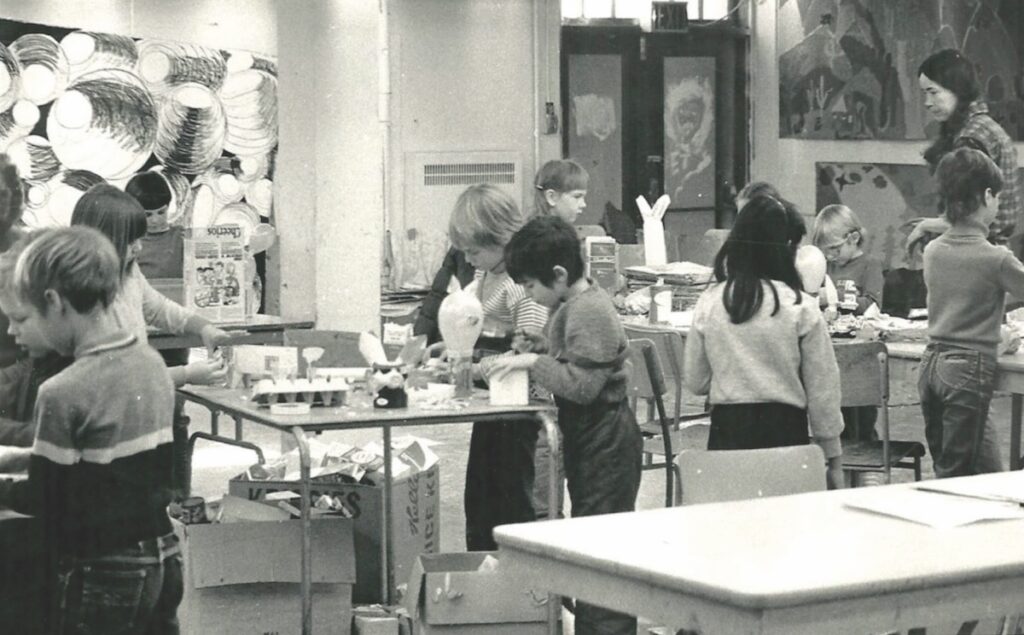
“No student is lost, and everyone is engaged,” explains McKay, who drew upon her passion and experience as a professor and curriculum designer at Mac to shape DVSA’s diploma program. She enthuses about the depth of debate she often overhears among the current students and faculty from her adjacent office in the storied loft, where individual studio spaces have been established for the first cohort of full-time students. Application to the program’s second intake year is open to artists at any life stage, from high school graduates seeking a unique post-secondary path to experienced artists renewing their practices later in life. Financial aid, including a full scholarship, aims to reduce barriers to entry. Students also have free access to the full spectrum of DVSA’s part-time classes to hone their skills beyond the core curriculum.
With so many artists already nourished by DVSA through learning, teaching, and peer relationships, it’s exciting to imagine the impact to come from a new generation of artists in our region trained in this unique environment, as well as the community of artists who will continue to gather within and beyond DVSA’s factory walls. After 60 years of unfaltering growth and continuous improvement, it’s all too easy to envision another 60 years to come.





